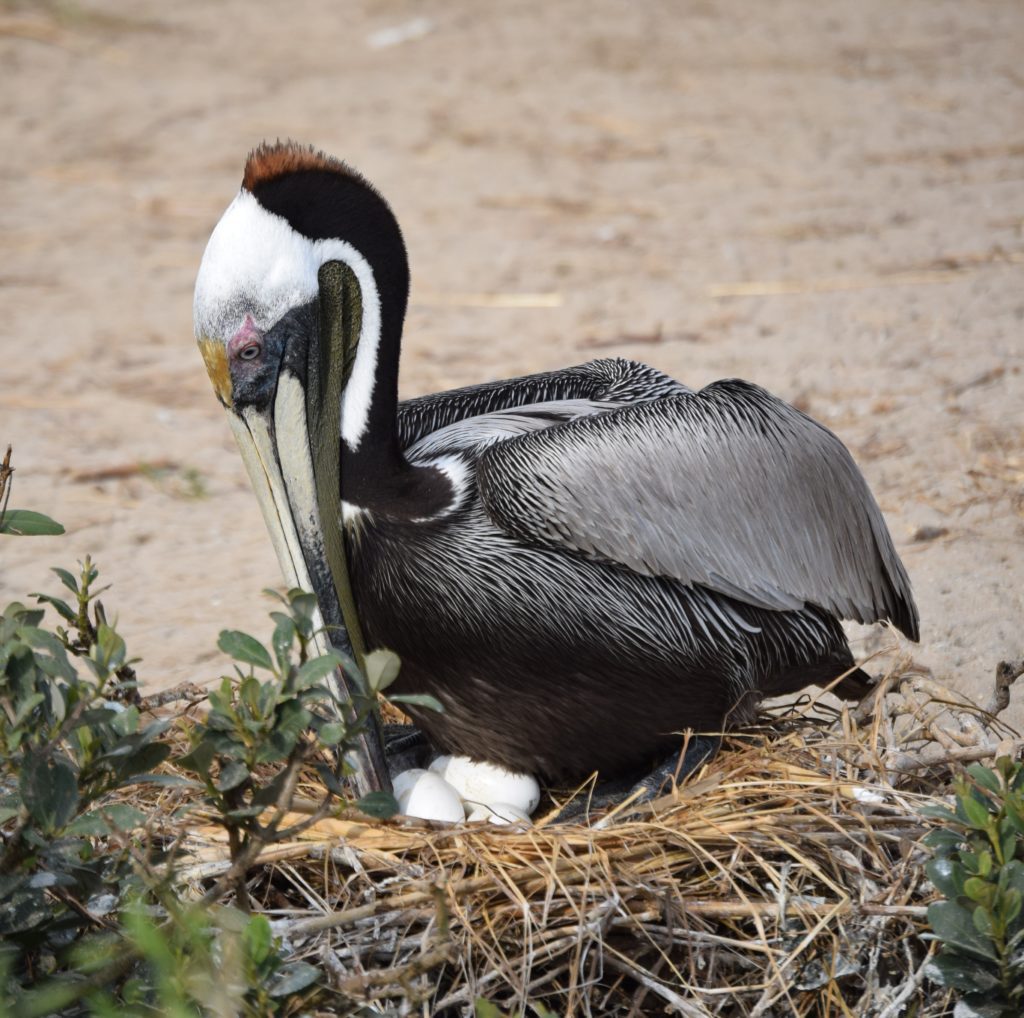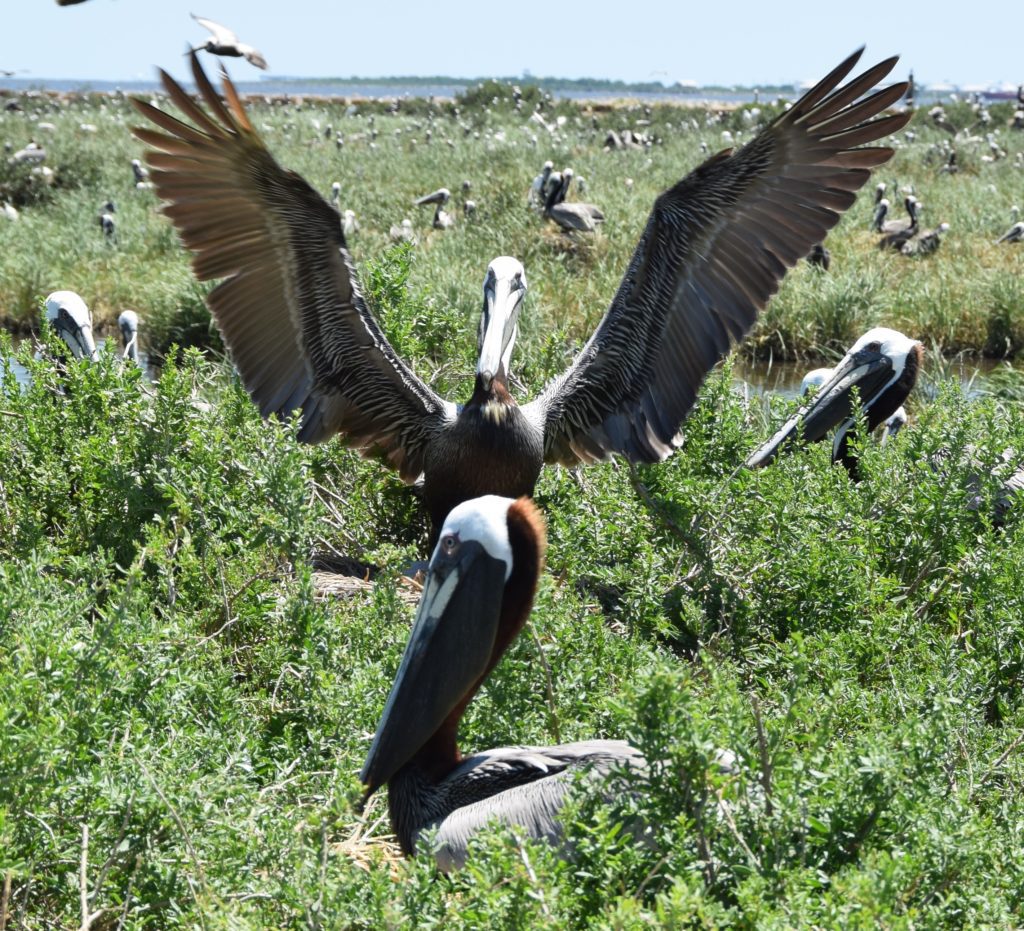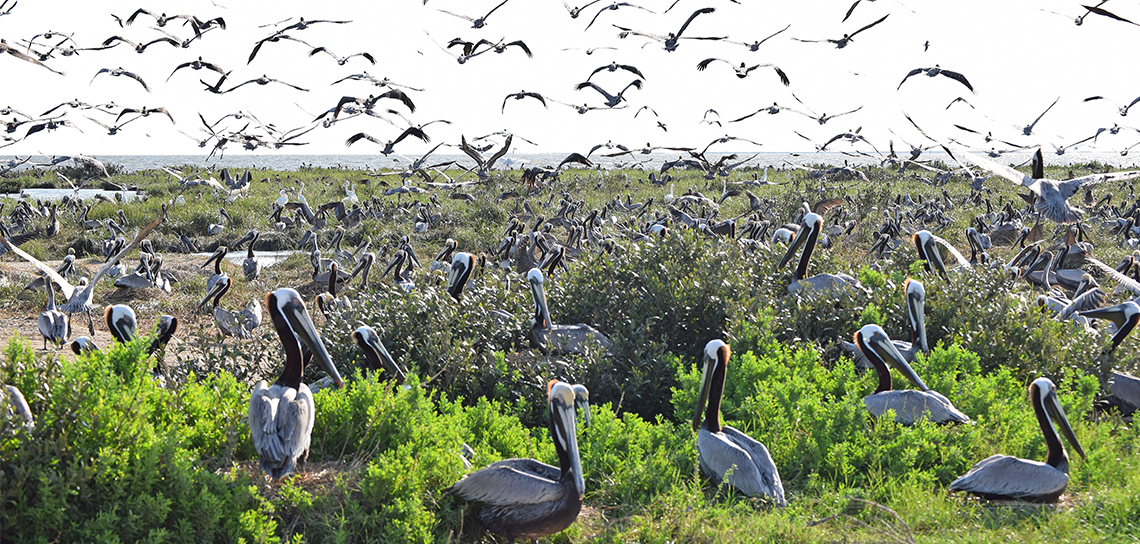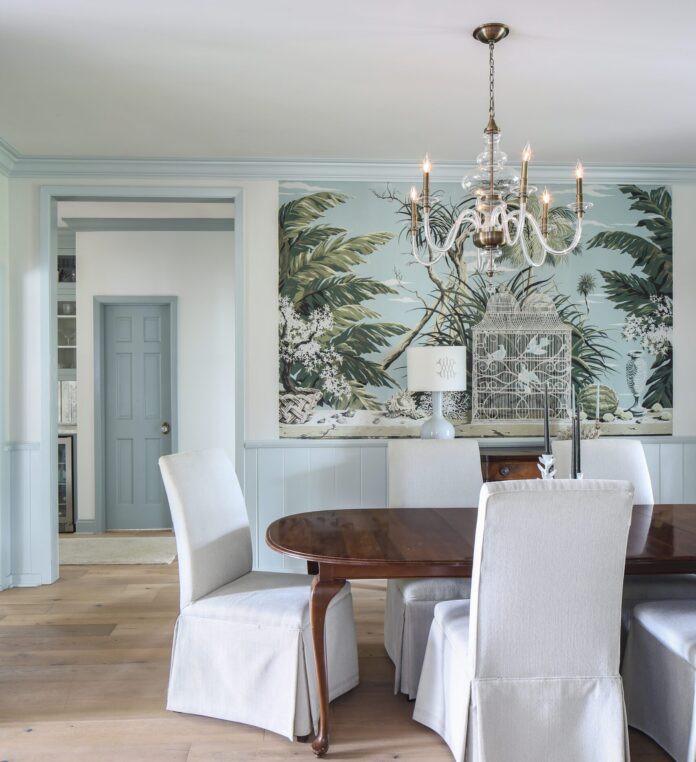For the birds: A brown pelican success story at Queen Bess Island
When Todd Baker paid a visit to Queen Bess Island in mid-May, what he saw was nothing short of astounding.
The birds were back.
 Only three months after the completion of a major restoration effort on the small Barataria Bay island northeast of Grand Isle, brown pelicans were nesting there in numbers that Baker, the project manager for the Louisiana Department of Wildlife and Fisheries, could never have predicted.
Only three months after the completion of a major restoration effort on the small Barataria Bay island northeast of Grand Isle, brown pelicans were nesting there in numbers that Baker, the project manager for the Louisiana Department of Wildlife and Fisheries, could never have predicted.
“To say that we have a success is quite an understatement,” said Baker during a webinar just days after his surveying trip to the island with Louisiana Coastal Protection and Restoration Authority project manager Katie Freer. “To see this kind of strong response to a very small piece of ground shows how in need this type of habitat is, and how they will quickly use it if it’s made.”
Many Louisianans don’t remember a time when brown pelicans were absent from the state, but that was the case just over half a century ago. The pesticide DDT had wiped out a thriving pelican population. In 1968, the birds were reintroduced at Queen Bess, and they began to flourish again, until years of subsidence and erosion—topped off by the Deepwater Horizon oil spill—made this a much less hospitable home. Only five of the island’s 37 acres were available for nesting.
“Our goal was to restore 30 acres of nesting and brood rearing habitat for brown pelicans and other wading birds, and about seven acres of nesting habitats for the types of birds that prefer to nest on bare ground,” says Freer.
Using funds from the BP oil spill settlement, CPRA and LDWF had to work fast to get the island back in shape without disturbing pelicans during nesting season. “This project had to be built in a very short time frame,” says Baker. “They essentially had to wait for the 2019 nesting season to conclude, which is mid-September, and they had to be off the island before the next nesting season started, which is February 14.”
 They made the most of those five months. Twenty-two thousand tons of heavy riprap stone were used to elevate a rock dyke around the island, with smaller limestone filling in the gaps. Barges brought in 157,000 cubic yards of Mississippi River sand to build up a bare-ground nesting habitat, and that sand was topped with geotextile fabric and gravel. More than 26,000 plants were put in, along with grass seed and 1,325 bales of hay.
They made the most of those five months. Twenty-two thousand tons of heavy riprap stone were used to elevate a rock dyke around the island, with smaller limestone filling in the gaps. Barges brought in 157,000 cubic yards of Mississippi River sand to build up a bare-ground nesting habitat, and that sand was topped with geotextile fabric and gravel. More than 26,000 plants were put in, along with grass seed and 1,325 bales of hay.
The scientists predicted that 1,500 pelicans would find the restored island suitable for nesting in this first year. But when Baker and Freer conducted their first survey in May, they found a whopping 8,000 pelican nests—along with a multitude of roseate spoonbills, great egrets, tricolored herons and other avian species.
Next up, the partner agencies are poised to restore Rabbit Island, a Cameron Parish colony for brown pelicans. They’ll use the lessons learned during the Queen Bess initiative to inform their efforts.
“This project wasn’t simply about building marsh. This project was about building birds, essentially,” says Baker. “It really clearly shows that more work like this needs to be done.”












